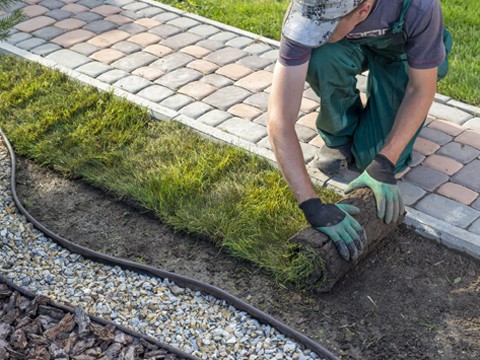Emergency maintenance in facilities is one of those responsibilities that doesn’t keep a regular schedule but when it hits, it demands immediate action. From burst pipes and power outages to fire system failures and storm damage, facilities managers in Australia must be prepared to respond quickly, safely, and effectively.
This guide breaks down a structured approach to emergency maintenance, equipping facilities managers with a practical playbook to handle urgent repairs and minimise disruption. Whether you’re overseeing a single commercial building or a multi-site portfolio, having a rinse-and-repeat emergency protocol is essential for compliance, safety, and business continuity.
Table of Contents
ToggleWhat Is Emergency Maintenance in Facilities?
Emergency maintenance refers to the immediate repair of a facility component that poses a safety risk, interrupts critical operations, or violates regulatory compliance if left unresolved. This can include:
Fire alarm or sprinkler system failures
These systems are your first line of defence in a fire emergency. A failure can compromise life safety and breach AS 1851 compliance, requiring urgent investigation and rectification.
Electrical outages or exposed wiring
Power disruptions or live wires can shut down building operations and pose a serious WHS risk. Immediate isolation and licenced repair are essential to prevent injury or equipment damage.
Plumbing leaks or burst water mains
Water ingress can quickly cause damage to walls, flooring, and electrical systems. Acting fast limits repair costs and protects occupants from slip hazards.
Gas leaks or ventilation hazards
Gas-related incidents carry an explosion risk and require evacuation. Ventilation failures can lead to poor air quality, especially dangerous in enclosed or high-traffic areas.
Lift entrapments or HVAC breakdowns in critical areas
Lift malfunctions can trap occupants and trigger panic. HVAC failures in temperature-sensitive areas like server rooms or healthcare facilities can disrupt operations or damage assets.
In contrast to preventative or scheduled maintenance, emergency maintenance is reactive, but it doesn’t have to be chaotic. That’s where structured protocols come in.
🧠 Fast Fact: According to Safe Work Australia, poor maintenance practices are a leading factor in workplace injuries related to slips, trips, and electrical hazards. A prompt emergency response reduces risk and liability.

Why Emergency Protocols Matter
A well-documented emergency maintenance protocol gives facilities managers:
Faster response times
With a predefined plan, teams avoid confusion and initiate action immediately, minimising damage and safety risks.
Improved safety for occupants and staff
Rapid containment and communication keep people out of harm’s way and reduce the likelihood of injury or liability.
Clear audit trails for compliance
Less downtime and business disruption
A coordinated approach means faster rectification, allowing building systems and occupants to return to normal operations sooner.
Confidence under pressure
Teams with clear procedures are less likely to panic. When everyone knows their role, critical decisions are made faster and more effectively.
Without a defined process, critical minutes can be lost and in emergencies, minutes matter.
The 6-Step Emergency Maintenance Protocol
Here’s a rinse-and-repeat framework your facilities team can use across any Australian commercial site.
1. Identify and Assess the Risk
Before anything else, assess:
If there’s immediate danger to life, like exposed power, fire, or gas leaks, evacuate and escalate immediately.
Situations like active flooding, falling debris, or HVAC failure in server rooms require urgent containment to prevent costly repairs.
Non-functional fire alarms or unsecured access points may not feel urgent, but they expose your business to legal risk and must be prioritised.
Example: A leaking ceiling near electrical panels is more than a maintenance issue, it’s a risk requiring urgent shutdown and intervention.
2. Activate Emergency Procedures
Depending on severity:
Follow your site’s emergency evacuation plan, prioritising safety for staff, tenants, and visitors.
Alerting trained emergency response leaders ensures evacuation or containment actions are properly coordinated.
If safe to do so, isolating utility supplies can prevent hazards from escalating, like electrical fires or flooding.
🧯 Tip: Ensure your fire safety plan is compliant with AS 1851:2012 and regularly rehearsed via evacuation drills.
3. Contact Approved Contractors
Use your pre-approved contractor list or CAFM system to:
Create a formal record that includes time, location, and immediate observations for future reference.
Ensure the right specialist is dispatched quickly and has prior knowledge of the site if possible.
Sharing images or basic fault information can help the contractor arrive prepared, reducing time on site and increasing first-fix rates.
💡 At JKFM, we coordinate trade dispatch in real time using our custom-built CAFM platform, JK Connect, ensuring the right technician is assigned with full visibility across work orders and response times.
4. Secure the Area
Until the emergency is resolved:
Blocking access minimises exposure to hazards and reduces the chance of secondary incidents while repairs are underway.
This ensures any escalation is flagged quickly and provides reassurance to occupants nearby.
Keeping tenants or employees informed builds trust and reduces anxiety during uncertain situations.
Safety comes first, both for those addressing the emergency and those working nearby. This step also helps reduce potential liability by showing proactive hazard control under WHS obligations.
5. Document the Incident and Response
Accurate records are essential. Post-incident documentation should include:
Timestamped records establish a clear sequence of events for later reporting or investigations.
Visual evidence supports insurance claims and helps assess the scope and quality of the repair.
Logging who attended ensures accountability and enables performance tracking of your contractors.
Knowing what went wrong and how it was fixed helps prevent future occurrences and informs your maintenance strategy.
This helps quantify the operational impact and may support claims or internal reviews.
Many emergencies require a return visit or equipment upgrade. Recording these ensures nothing falls through the cracks.
📁 Whether for internal audits, WHS compliance, or insurance claims, having a documented response builds trust and accountability.
6. Debrief and Prevent Future Occurrences
Once the incident is resolved:
Capture insights while the event is fresh, including what went well and where response times or decisions could improve.
Use lessons learned to refine your emergency plan, update SOPs, or improve your contractor escalation process.
Address underlying causes with targeted maintenance or upgrades such as pressure testing plumbing or replacing faulty fire detectors.
🧠 Pro Tip: Turn emergency incidents into learning opportunities. By analysing root causes (e.g. ageing infrastructure, missed inspections), you can implement proactive solutions that reduce long-term risk.
Common Emergency Scenarios in Australian Facilities
Here’s a snapshot of typical emergency situations we see across commercial and industrial sites and how to stay ahead of them:
Scenario
Burst water pipe
Power outage
HVAC failure
Fire system fault
Lift entrapment
Data room overheating
Root Cause
Corroded plumbing or freezing temperatures
Grid disruption or overloaded circuits
Dirty filters, motor burnout, blocked vents
Blocked sprinkler heads or expired detectors
Mechanical fault or power cut
Cooling system failure or airflow obstruction
Preventive Action
Routine plumbing inspections & insulation checks
Install UPS systems & maintain switchboards
Schedule quarterly servicing, especially pre-summer
Maintain AS 1851 compliance with routine testing
Engage a specialist lift contractor with 24/7 coverage
Monitor temperature thresholds with sensors

Emergency Maintenance Compliance in Australia
Emergencies don’t exempt you from compliance, in fact they heighten your responsibility to act appropriately and transparently. Key standards that apply during emergency maintenance include:
WHS Act 2011 (Cth) - Mandates risk management and incident response
You’re legally required to take reasonable steps to protect staff and visitors during and after an emergency.
AS 1851:2012 – Routine servicing of fire protection systems
Fire safety systems must be maintained and operational. A fault must be rectified immediately and documented.
AS/NZS 3760:2022 – Electrical safety and test/ tag requirements
Any electrical equipment involved in an emergency must be inspected or tagged as part of your compliance protocol.
National Construction Code (NCC) – Sets structural safety standards
If a structural fault has caused or resulted from the emergency (e.g. collapsed ceiling), remedial action must align with NCC provisions.
Failing to respond appropriately can result in:
Regulatory Fines
Breaching WHS or NCC obligations can attract penalties, particularly if negligence or lack of documentation is evident.
WorkSafe investigations
Any incident involving injury, gas leaks, or electrical hazard may trigger a formal investigation.
Increased insurance premiums
Poorly managed incidents raise your risk profile and can affect future coverage or claims.
Brand and reputational damage
Tenants, staff, and the public lose trust quickly if an incident is mismanaged, especially in public-facing sectors like retail or healthcare.
📋 Document everything — including near misses and ensure that your team receives regular refresher training on emergency protocols.
Tools and Technology to Support Your Response
- CAFM Software (like JK Connect): For live job tracking, trade coordination, and mobile alerts
- Digital Asset Registers: For quick access to warranties, manuals, and emergency shutdown instructions
- Photo & Video Upload Tools: For visual documentation of the fault and resolution
- Emergency SOP Templates: Stored in a cloud-based system, accessible across teams and locations
- Sensor-Based Monitoring: For water, temperature, or smoke detection with automated notifications
💡 With JK Connect, our clients can log issues, access asset info, and escalate emergencies directly from their mobile, minimising delays and confusion.
Partnering with JKFM for Emergency Response
At JKFM, we understand that emergencies aren’t 9 to 5, that’s why we offer around-the-clock support to help you manage emergency maintenance incidents across one site or many.
Our emergency FM support includes:
- CAFM Software (like JK Connect): For live job tracking, trade coordination, and mobile alerts
- Digital Asset Registers: For quick access to warranties, manuals, and emergency shutdown instructions
- Photo & Video Upload Tools: For visual documentation of the fault and resolution
- Emergency SOP Templates: Stored in a cloud-based system, accessible across teams and locations
- Sensor-Based Monitoring: For water, temperature, or smoke detection with automated notifications
“One call to JKFM and it’s handled, from triage to reporting. Our team can focus on safety and communication while they take care of the rest.”
FAQs About Emergency Maintenance in Facilities
Any fault that threatens health, safety, property, or compliance, such as electrical hazards, flooding, fire protection system failure, or HVAC failure in critical areas.
Immediate action is ideal. Assess risk within 15 minutes and initiate escalation or containment as per your site protocol.
Follow your site-specific SOPs. Usually, the FM assesses and escalates to the right contractor. For serious hazards (fire, gas), emergency services come first.
Time of incident, area affected, personnel involved, action taken, trade response details, supporting photos, and follow-up tasks.
Preparation Prevents Panic
Emergency maintenance is one of the few areas in facilities management where speed, clarity, and calm under pressure make all the difference. Having a clear response plan and the right partner is what separates a contained incident from a costly disaster.
At JKFM, we help commercial facilities across Australia prepare, respond, and recover from unexpected maintenance events with confidence.
Want help building your emergency maintenance plan or response toolkit?
Get in touch with JKFM, we’re ready when you need us most.






